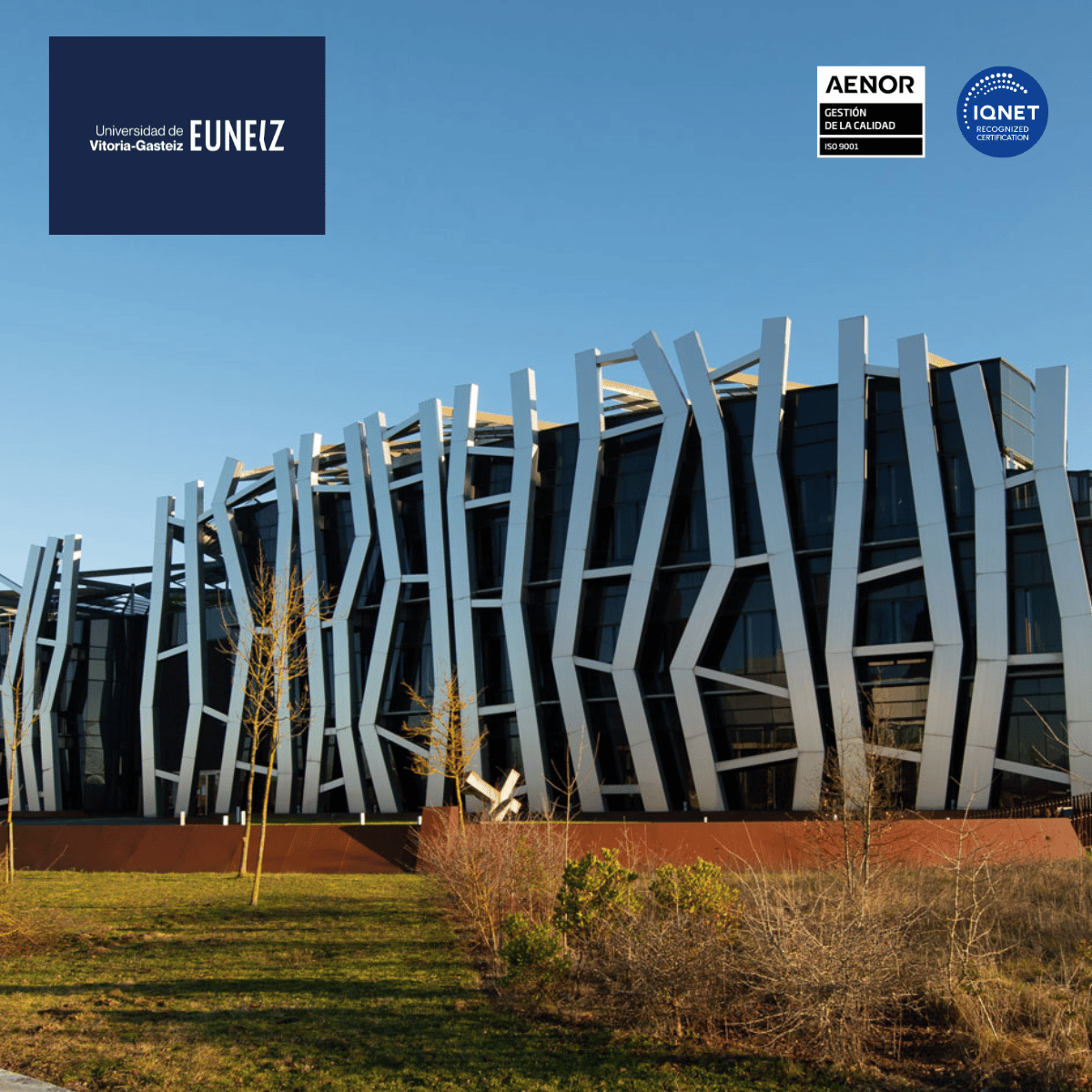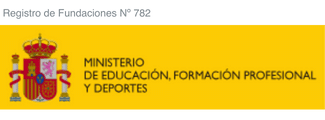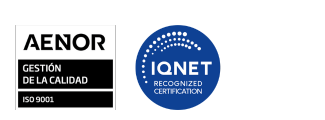The innovative teaching program of the Aula_Smart® Foundation is an initiative designed to transform the way it is taught and learned in the classrooms. This program focuses on the incorporation of information and communication technologies (ICT) in the educational process, with the aim of improving the quality of education and preparing students for the digital world.
The program offers training to teachers in the effective use of ICT in teaching. This includes training in the use of various digital tools and platforms, as well as in the integration of these technologies in the curriculum so that it improves student learning.
In addition, the innovative teaching program also focuses on the development of 21st century skills among students. This includes skills such as critical thinking, problem solving, creativity, collaboration and digital literacy. By promoting these skills, the program helps prepare students for the future, equipping them with the skills they will need to succeed in the digital economy.
The innovative teaching program also promotes innovation in teaching and learning. Through this program, the Aula_Smart® Foundation encourages teachers to experiment with new pedagogical methodologies and approaches, and to share their experiences and best practices with other teachers.
In summary, the innovative teaching program of the Aula_Smart® Foundation is a comprehensive initiative that seeks to transform education through the integration of ICT, teacher training, the development of skills of the 21st century and the promotion of innovation

Justification
The justification of the innovative teaching program of the Aula_SMart® Foundation It lies in the growing importance of information and communication technologies (ICT) in the educational field. In the current digital age, ICTs have become an essential tool for teaching and learning. However, despite its potential, the effective integration of ICT in education remains a challenge.
In the first place, many teachers lack the necessary training to effectively use ICT in their teaching. This can limit your ability to integrate these technologies into the curriculum and take advantage of their benefits to improve students learning.
Second, the education sector often lacks the necessary economic resources to acquire and maintain technological infrastructure. This can hinder students' access to ICT and limit their ability to develop the digital skills they will need in the future.
The innovative teaching program of the Foundation AULA_SMART® It addresses these challenges providing training to teachers in the use of ICTs and promoting the adoption of these technologies in the education sector. In doing so, the program seeks to improve the quality of education and prepare students for the digital world.
Therefore, the justification of the innovative teaching program lies in its potential to transform education through the integration of ICTs, thus contributing to the formation of competent digital citizens and the development of an inclusive and equitable knowledge society.
Goals
The objectives of the innovative teaching program of the Foundation
AULA_SMART® are:
Train teachers in the effective use of ICT:
Provide teachers with the necessary training to effectively use ICTs in their teaching, allowing them to integrate these technologies into the curriculum so that they improve student learning.
Promote the adoption of ICT in the education sector:
Promote the incorporation of ICT in the education sector, surpassing economic and training barriers that often prevent their effective integration.
Develop 21st century skills among students:
Facilitate the development of 21st century skills among students, including critical thinking, problem solving, creativity, collaboration and digital literacy.
Promote innovation in teaching and learning:
Encourage teachers to experiment with new pedagogical methodologies and approaches, and to share their experiences and best practices with other teachers.
Improve the quality of education:
Use ICT to improve the quality of education, providing a more interactive and attractive learning experience for students.
Methodology
The methodology of the innovative teaching program of the Foundation AULA_SMART® It is based on the following components:
This integral methodology ensures that the innovative teaching program of the Aula_SMart® Foundation can achieve its objectives to improve the quality of education through the integration of ICT.
Teacher training:
Training courses for teachers are offered, focused on the effective use of ICT in teaching. These training programs are designed to equip teachers with the skills and knowledge necessary to integrate ICT into their teaching effectively.
Curriculum integration:
It works with teachers to integrate ICT into the curriculum so that it improves students learning. This may imply the incorporation of digital tools in the lessons, the use of online learning platforms, or the implementation of technology -based learning projects.
21st century skills development:
The development of 21st century skills among students is promoted, including critical thinking, problem solving, creativity, collaboration and digital literacy. This is achieved through interactive and attractive learning activities that ICT use.
Pedagogical innovation:
Innovation in teaching and learning is encouraged, encouraging teachers to experiment with new pedagogical methodologies and approaches. Teachers also have the opportunity to share their experiences and best practices with other teachers.
Continuous evaluation and improvement:
Continuous monitoring and evaluation of the programs and activities of the innovative teaching program to ensure its effectiveness and continuously improve. This includes the feedback collection of teachers and students, as well as the realization of periodic program performance evaluations.
Expected results
The innovative teaching program of the Aula_SMart® Foundation He hopes to achieve a series of significant results that reflect its impact on education.
These expected results reflect our commitment to improve the quality of education through the integration of ICT.
Improvement of teachers' ICT skills:
We hope that teachers who participate in the program acquire a solid and practical knowledge of ICT and learn how to use them effectively in teaching. This will be measured through training evaluations.
One of the main objectives of the innovative teaching program of the Aula_Smart® Foundation is to improve teachers' skills in the use of information and communication technologies (ICT). This objective is achieved through a series of strategies and activities:
ICT training: Teachers receive training in the use of various tools and digital platforms. This training adapts to the needs and levels of skill of each teacher, and covers a wide range of topics, from the basic use of ICT to their application in teaching and learning.
Digital skills development: In addition to training in the use of ICT, the program also focuses on the development of digital skills. This includes skills such as the search and evaluation of online information, online communication and collaboration, and the creation and sharing of digital content.
SUPPORT AND CONTINUOUS ADVICE: Teachers receive continuous support and advice as ICTs integrate into their teaching. This may include individualized advice, online learning resources, and opportunities to share experiences and learn from other teachers.
Evaluation and feedback: Teachers receive regular evaluations and feedback on their use of ICT. This helps them identify areas of improvement, celebrate their achievements, and plan their continuous professional development.
Through these strategies and activities, the innovative teaching program seeks to improve teachers' skills in the use of ICTs, allowing them to effectively integrate these technologies in their teaching and improve the quality of education.
Effective Integration of ICT in the classroom:
The effective integration of Information and Communication Technologies (ICT) in the classroom is a key component of the innovative teaching program of the Aula_SMart® Foundation. This process implies more than simply providing teachers and students access to ICT; This is how these tools are used to improve teaching and learning. Here are the key elements of this process:
TEACHER TRAINING IN ICT: Teachers receive training in the use of various tools and digital platforms. They learn how to use these technologies to present information more attractive, facilitate collaboration between students, and customize learning to meet the individual needs of each student.
Incorporation of ICT in the curriculum: ICTs are incorporated into the curriculum so that they enrich the teaching-learning process. This may involve the use of digital presentations to explain concepts, online learning platforms to assign and evaluate students' work, or educational applications to allow students to practice specific skills.
Use of ICT for active learning: ICTs are used to promote active learning, in which students actively participate in their own learning. This may involve the use of digital simulations to explore concepts, content creation tools to allow students to demonstrate their understanding in a creative way, or online collaboration platforms to facilitate group work.
Continuous support for teachers: Continuous support is provided to teachers as ICTs integrate into their teaching. This may include individualized advice, continuous professional development opportunities, and a practice community where teachers can share their experiences and learn from each other.
Through these elements, the innovative teaching program seeks to ensure that ICTs are effectively integrated into the classroom, thus improving the quality of education.
21st century skills development among students:
We hope that students develop skills of the 21st century, such as critical thinking, problem solving, creativity, collaboration and digital literacy. This will be measured through teachers' feedback.
Increased trust and competition of teachers in the use of ICT:
We hope that teachers who participate in the program feel more secure and competent in the use of ICT in their teaching. This will be measured through self -assessment and feedback surveys of teachers. The innovative teaching program of the Aula_SMart® Foundation Its objective is to increase the confidence and competence of teachers in the use of information and communication technologies (ICT). This objective is achieved through several strategies:
Continuous training: Teachers receive continuous training in the use of ICT. This training not only provides them with the necessary technical skills, but also helps them understand how ICTs can use their teaching.
Support and advice: Teachers have continuous support and advice as ICTs integrate into their teaching. This provides them with the confidence that they have the necessary support to face any challenge they can find.
Practice and experimentation: Teachers are encouraged to practice and experiment with ICT in a safe and support environment. This allows them to gain confidence in their skills and competencies as they see the benefits of ICT in their teaching.
Share experiences and best practices: Teachers have the opportunity to share their experiences and best practices with other teachers. This not only allows them to learn from each other, but also reinforces their trust when seeing how other teachers have been successful in the integration of ICTs into their teaching.
Through these strategies, the innovative teaching program seeks to increase the confidence and competence of teachers in the use of ICTs, allowing them to make the most of the opportunities that these technologies offer to improve teaching and learning.
Evaluation and feedback:
Teachers receive regular evaluations and feedback on their use of ICT. This helps them identify areas of improvement, celebrate their achievements, and plan their continuous professional development.
Evaluation and monitoring
Evaluation and monitoring are essential components of the innovative teaching program of the Aula_SMart® Foundation. These processes allow us to measure the impact of the program and make adjustments as necessary to ensure its continuous effectiveness.
Through these evaluation and monitoring processes, we strive to ensure that the innovative teaching program is fulfilling its objectives and effectively serving teachers and students.
Teacher evaluation:
We carry out regular evaluations of the teachers who participate in the program. These evaluations may include self -evaluation questionnaires, classroom observations, and feedback. These evaluations help us understand how teachers are using ICT in their teaching and how we can support them better.
Progress monitoring:
We continue follow -up of teachers' progress in the program. This includes the monitoring of the number of teachers who participate in the program, as well as their progress over time in terms of their skills and confidence in the use of ICT.
Impact evaluation:
We evaluate the impact of the program on teaching and learning. This may imply the collection and analysis of data on the use of ICT in the classroom, and the satisfaction of teachers and students with the program.
Continuous improvement:
We use the results of our evaluations and monitoring to make continuous improvements in the program. This may imply the review and update of our training materials, the adaptation of our support strategies, or the implementation of new initiatives to address emerging challenges.
Necessary resources
To implement the innovative teaching program of the Aula_SMart® Foundation Effectively, we have the following resources:
These resources are essential for the success of the innovative teaching program and require a significant investment by the Aula_SMart® Foundation.
Online training platform:
We will use our Teeeech online campus for training courses. This platform provides a virtual space where teachers can access the course materials, participate in learning activities, and collaborate with other teachers.
ICT equipment for teachers:
The Aula_SMart® Foundation Done a Tic team to each teacher who participates in the program. Teachers can choose between a laptop, an iPad or a Chromebook. These devices will allow teachers to use various digital tools and platforms, and experiment with the integration of ICT into their teaching.
Human Resources:
We have qualified trainers to teach training courses, as well as support personnel to provide advice and support for teachers as ICTs integrate into their teaching.
Learning resources:
We develop and provide a variety of learning resources for training courses. This includes training manuals, video tutorials, interactive learning activities, and best practices examples.
Technological infrastructure:
We have a robust technological infrastructure to support the online training platform and ensure that teachers can access learning resources efficiently and safely.
Implementation Plan
The implementation plan of the innovative teaching program of the Aula_SMart® Foundation It develops in several stages.
This implementation plan ensures that the innovative teaching program is effectively implemented and achieves its objectives to improve the quality of education through the integration of ICT.
Authorization of those responsible for the educational centers:
It is necessary to obtain the authorization of those responsible for the educational centers (directors, training responsible, ICT managers, human resources ...). This ensures that the program has the necessary support at the institutional level and allows the training courses to be 100% bonus against Fondae, they are totally free for teachers of private and concerted centers.
CALL FOR THE REGISTRATION OF TEACHERS:
Throughout the year, several calls are made for teachers to enroll in the program. These calls are announced enough to allow teachers to plan their participation.
Teachers Training:
Teachers receive training in the use of ICT in teaching. This training is done through our online Teeech campus and adapts to the needs and levels of skill of each teacher.
ICT equipment delivery:
At the end of the training courses, the Aula_Smart® Foundation gives the teacher of the chosen ICT team. Teachers can choose between a laptop, an iPad or a Chromebook. These devices will allow teachers to apply what they learned in the courses and continue integrating ICT into their teaching.
Classroom implementation:
After training, teachers begin to integrate ICT into their teaching. During this period, teachers have continuous support and advice to help them overcome any challenge they can find.
Evaluation and monitoring:
Throughout the program, continuous follow -up of teachers is carried out and the impact of the program on teaching and learning is evaluated. The results of these evaluations are used to make continuous improvements in the program.

Participants and beneficiaries
The participants of this program are teachers who work in various educational centers. These teachers can have different roles within their institution, such as classroom teachers, department coordinators, programs directors, among others. Participants can come from different educational levels (primary, secondary, university) and of different disciplines.
The main objective for participants is to develop and improve their pedagogical skills, learn about new teaching methodologies and acquire tools to implement innovation in their classrooms. Participants will have the opportunity to collaborate with other teachers, share experiences and good practices, and receive feedback and guidance of educational innovation experts.
The direct beneficiaries of this program are the students of the participating teachers. As teachers implement the strategies and tools learned in the program, students will benefit from a more innovative and effective teaching approach. This can lead to a better commitment in the classroom, a greater understanding of the course material and, ultimately, to better academic performance.
In addition, educational centers also benefit from the program. As more teachers participate and apply what they have learned, the institution as a whole can move towards a culture of innovation. This can improve the reputation of the educational center, attract more students and high quality personnel, and have a positive impact on the educational community in general.
Finally, parents and the community in general can also benefit indirectly, since high quality education is a public good that contributes to social and economic development.














